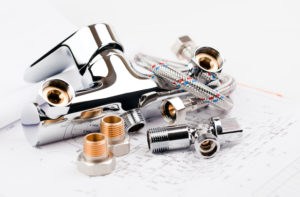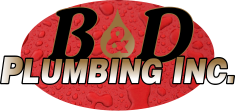
Once you figure out you have a plumbing issue, you may rush to the Internet for advice. Once you look around some plumber blogs, though, you’ll quickly realize that there is a lot of industry jargon that gets tossed around. Our plumbing systems are complex, so much so that we’ve developed lingo to help communicate specific ideas. Learning some of those words can help you communicate with your plumber and better understand what your home’s needs are. Let’s take a look at some of the most common plumbing industry terms and try to give them helpful definitions.
Black and Greywater
We use these words to describe the quality of water, particularly in relation to the plumbing fixtures that use that water. For example, blackwater is wastewater—either the sewage that flows from your toilet once you flush it or wastewater that gets stuck in a clogged toilet. On the other hand, greywater is all of the other water that flows from your household’s fixtures, like water that has gone from the tap down your kitchen sink.
Potable Plumbing Water
In contrast to blackwater and greywater, potable water refers to water that is safe for humans to consume. The name is derived from the fact that historically, drinking water was stored in pots. While the name is outdated, we continue to use the term.
Hard or Soft Water for Plumbing
Water softness refers to the mineral content within your water. Hard water is mineral-dense and can cause corrosion or even clog your fixtures. To soften your water, you can install a water softener that removes some of those minerals via a specialized substance or fixture, helping avoid any damage to your plumbing.
Snakes
Not the animal! Plumbing snakes are flexible cords that are wound into a spiral, used to remove clogs from drains. There are plastic consumer snakes available but plumbers tend to use higher-quality metal snakes.
Branch Drain
A branch drain is the pipe that is connected to sinks, bathtubs, toilets, washing machines, dishwashers, and all of the other fixtures in your home. This critical pipe then runs to your main drain pipe, which is connected to your sewage line that comes into your home.
Drain Field
This is the network of pipes connected to your septic tank, likely beneath your home’s yard. It’s an important element of your plumbing that removes contaminants from your septic tank before that water is able to enter the water table.
Trap Seal for Plumbing
Drains that are connected to a sewer have what we call a trap, a curved pipe that helps stop noxious odors from getting into your home. The trap seal itself is the water within that trap that stops gasses from getting in.
Get in Touch With B&D Today!
Dealing with any plumbing concerns that require a professional to step in? Struggling with an absolute plumbing emergency that can’t wait? Let B&D Plumbing know. B&D Plumbing Inc. services the greater Washington D.C. metropolitan area, including Maryland and Northern Virginia. Get in touch with us by calling (301) 595-1141 or follow us on social media including Facebook, Twitter, Google+, LinkedIn, and Pinterest. As a small, family-owned business, we understand how important your home is—and we offer exceptional service that matches!

